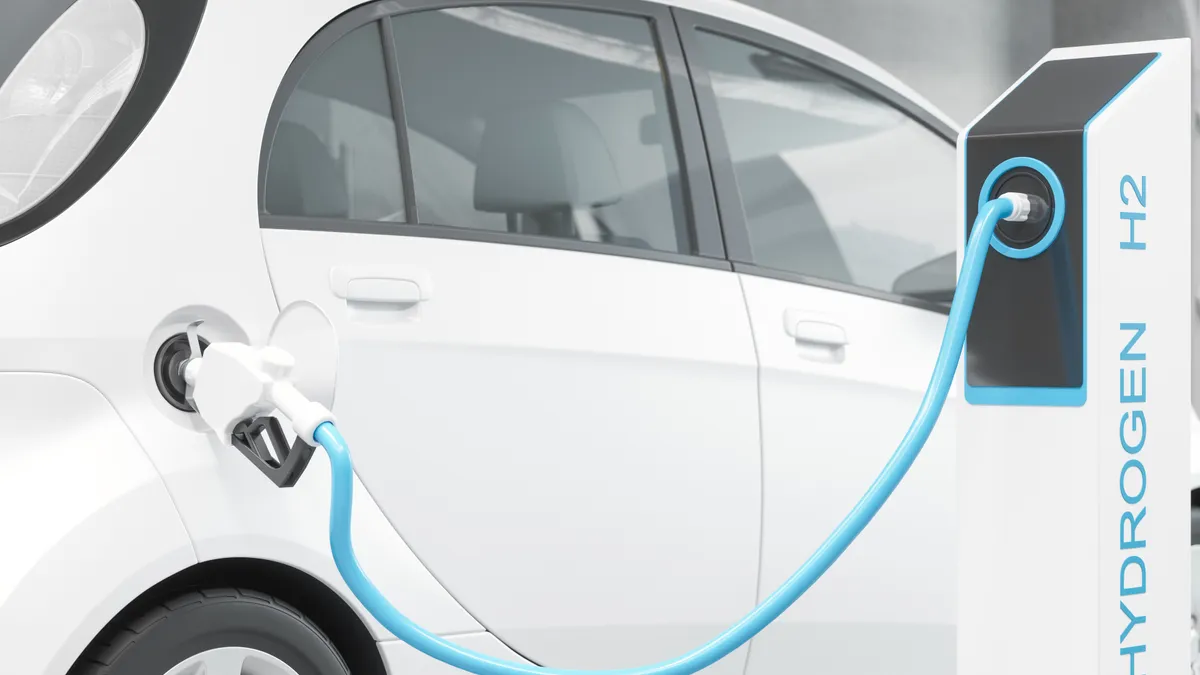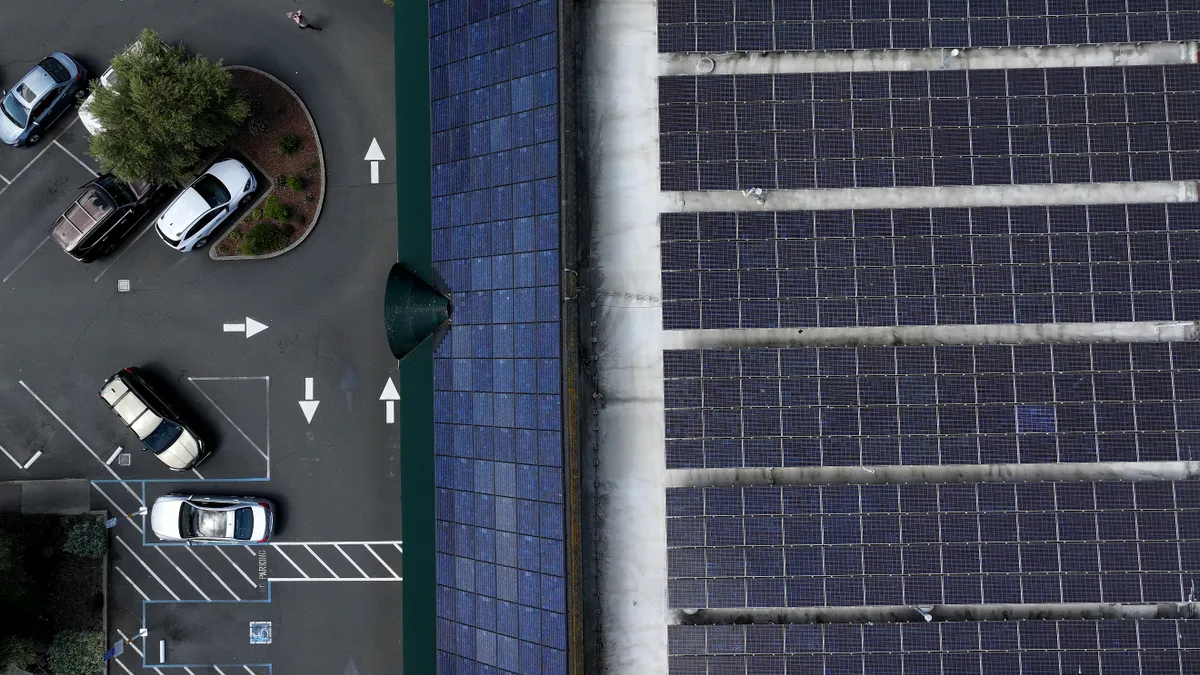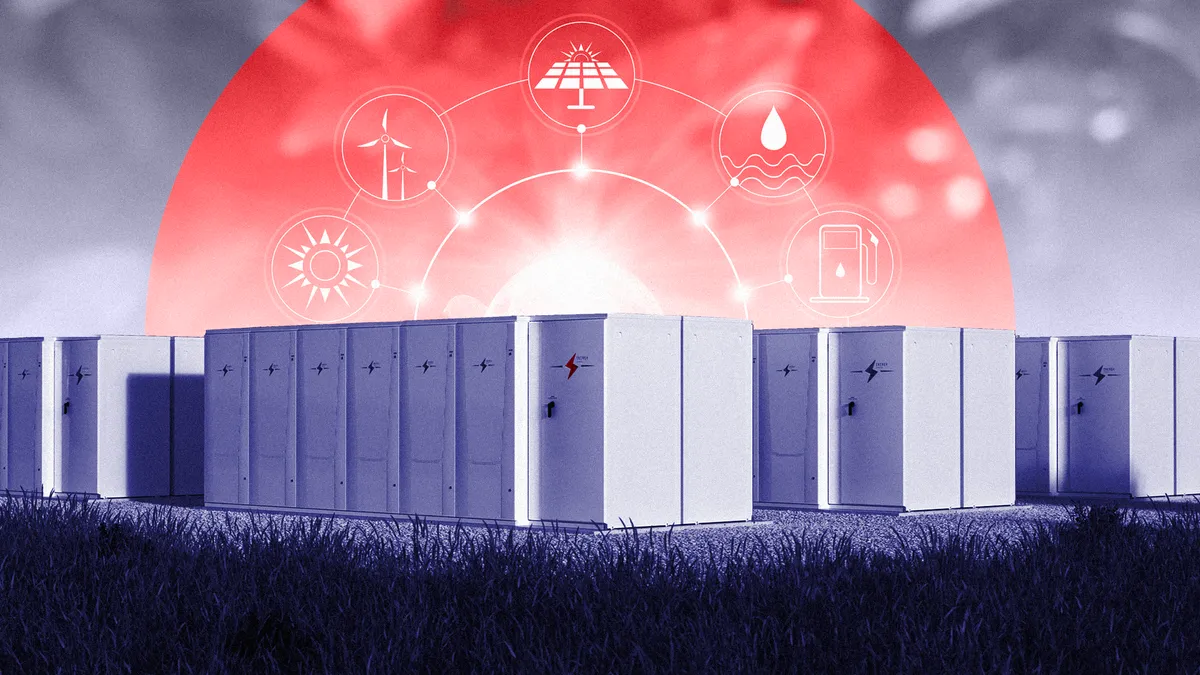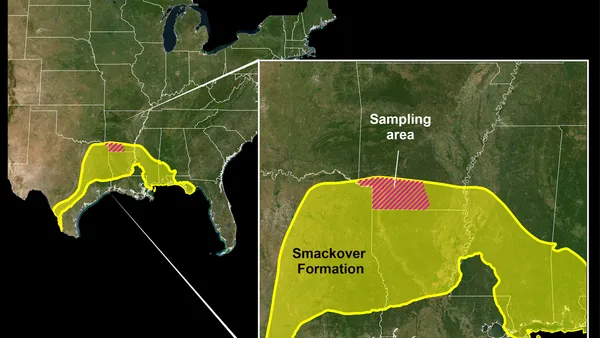Dive Brief:
-
The Center for Electromechanics at the University of Texas at Austin formally opened a first-of-its-kind hydrogen research center at a late April ceremony. More than 20 industry stakeholders and sponsors support the center, which the university has styled a “proto-hub.”
-
The research facility is equipped with facilities to make hydrogen from renewable natural gas, and from water and renewable energy via an on-site electrolyzer.
-
The proto-hub will be engaged in a study for the U.S. Department of Energy for the next year. After that, it may expand to test additional hydrogen technologies and offer training opportunities for professionals who may work with hydrogen-related equipment, according to Michael Lewis, director of the Center for Electromechanics.
Dive Insight:
The DOE may still be negotiating the specifics of its seven hydrogen hubs, but the first “proto-hub” hydrogen research center is officially up and running at the University of Texas at Austin.
The research center has been in the works since 2019 — well before the hubs, the creation of a federal hydrogen production tax credit, or even COVID, Lewis said. But trying to build a miniature hydrogen ecosystem, equipped with multiple producers and users of hydrogen fuel, meant the center ran into many of the same supply-chain delays and shortages that commercial projects have experienced over the last few years.
But the quarter-acre center is officially up and running, Lewis said, and making hydrogen from both renewable natural gas and from a co-located solar array. Although the center does not have direct access to a wind farm, they're also using real-world data so they can experiment with matching their electrolyzer's operations with wind generation — allowing the center to operate as though it were trying to qualify for the 45V hydrogen production tax credit under the Treasury's draft criteria.
The tax credit was not originally part of the center's planned scope of operations — it didn't exist at the time the project was conceived — but the university and its industry partners have adapted their plans to match updated, real-world circumstances as U.S. hydrogen policy has evolved, Lewis said.
On the offtake side, the center is using a stationary fuel cell to supply power to the nearby Texas Advanced Computing Center. They're also installed fueling stations for an on-site fleet of Toyota Mirai, and they fuel a mobile fueling trailer that is part of an off-site hydrogen-powered drone demonstration.
The setup should allow the project partners to test specific, real-world questions such as how variations in demand from diverse offtakers could impact the price of hydrogen. Or how steady supplies of hydrogen from feedstocks like natural gas play in a world with intermittent production from electrolyzers and wind and solar energy, said Brian Weeks, senior director of business development and research operations at GTI Energy.
Although the research center predates the commercial-scale hubs now in the works, Weeks said the research center can serve as a proving ground for new technologies that could be introduced within the hubs. In fact, the proto-hub has already helped connect collaborators who went on to win hub awards from the DOE, Lewis said.
The research center should be engaged in research for the DOE for the next year or so, Lewis said, but he and Weeks both see ample potential in the center's long-term future. Weeks said GTI Energy has already identified enough follow-on studies and demonstration projects to occupy the center for the next decade, and he said the center's partners have also heard from permitting and fire officials who are interested in using the site to train on hydrogen-related code requirements.












